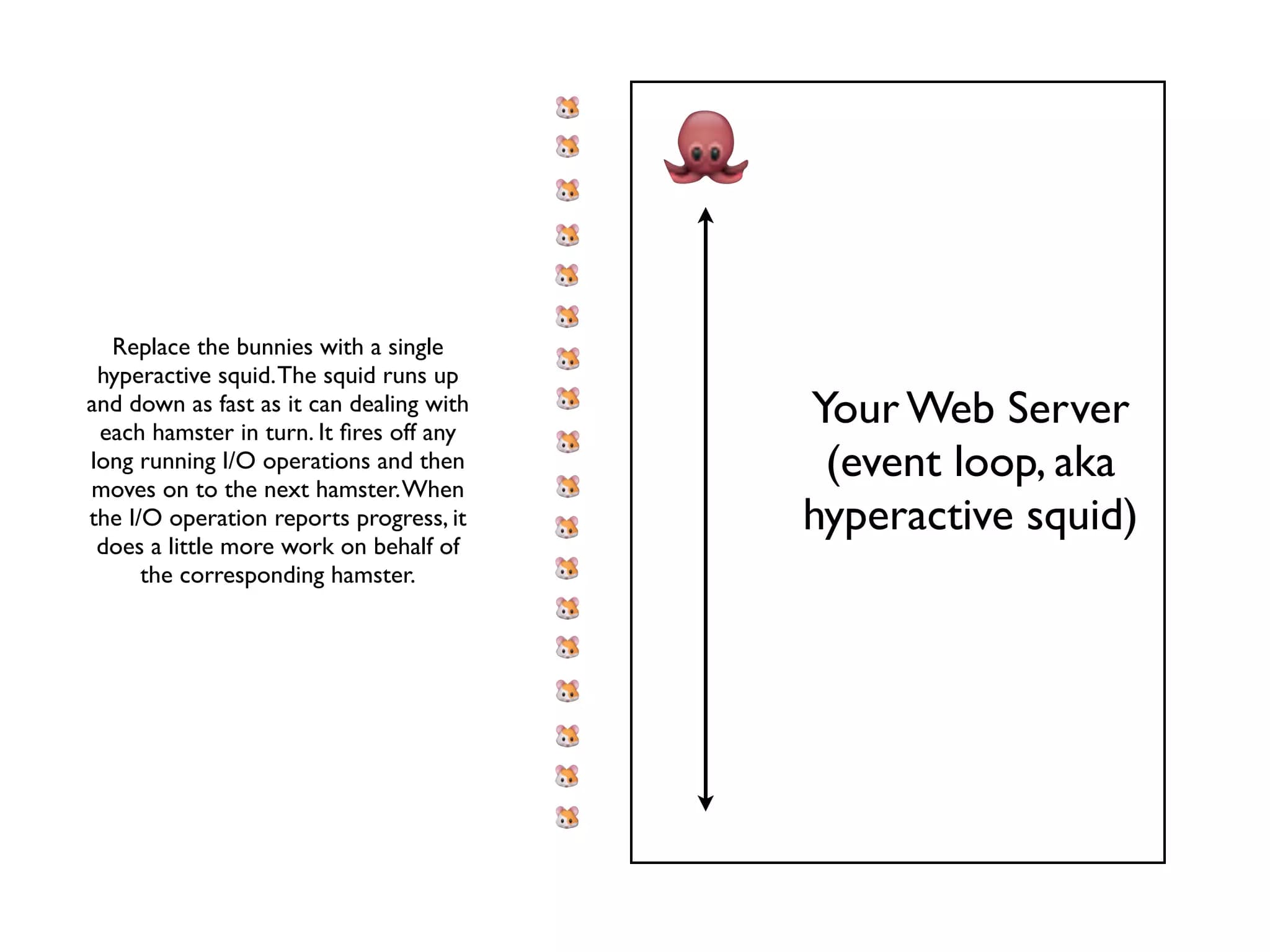Posts tagged comet in 2009
Filters: Year: 2009 × comet × Sorted by date
Web Sockets in Tornado. Bret Taylor has a simple class making it trivial to experiment with the Web Sockets protocol (now shipping in Chrome) using the scalable Tornado application server. He also raises the million dollar question: what will existing load balancers and proxies make of the new protocol?
Real time online activity monitor example with node.js and WebSocket. A neat exploration of Node.js—first hooking a “tail -f” process up to an HTTP push stream, then combining that with HTML 5 WebSockets to achieve reliable streaming.
Node.js is genuinely exciting
I gave a talk on Friday at Full Frontal, a new one day JavaScript conference in my home town of Brighton. I ended up throwing away my intended topic (JSONP, APIs and cross-domain security) three days before the event in favour of a technology which first crossed my radar less than two weeks ago.
[... 2,025 words]SPDY: The Web, Only Faster. Alex Russell explains the benefits of Google’s SPDF proposal (a protocol that upgrades HTTP)—including header compression, multiplexing, the ability to send additional resources such as images and stylesheets down without needing the data:uri hack and Comet support built in to the core assumptions of the protocol.
nginx_http_push_module. More clever design with webhooks—here’s an nginx module that provides a comet endpoint URL which will hang until a back end process POSTs to another URL on the same server. This makes it much easier to build asynchronous comet apps using regular synchronous web frameworks such as Django, PHP and Rails.
Diesel. Yet Another Asynchronous Python Comet Library, of interest because this is the first one I’ve seen that uses Python’s generator coroutines, taking advantage of the return value of the yield statement to feed messages in to a generator function. Currently only works on Python 2.6 on Linux due to a dependency on 2.6’s epoll support.
Tornado Web Server (via) An extremely exciting addition to the Python web landscape, Tornado is the open sourced version of FriendFeed’s custom web stack. It’s a non-blocking (epoll) Python web server designed for handling thousands of simultaneous connections, perfect for building Comet applications. The web framework is cosmetically similar to web.py or App Engine’s webapp but has decorators for writing asynchronous request handlers. The template language uses Django-style syntax but allows you to use full Python expressions. FriendFeed have benchmarked it handling 8,000 requests a second running as four load-balanced processes on a 4 core server.
svnpubsub.py (via) A Twisted/Python powered comet API for pushing out Subversion commits, built for Apache Foundation projects.
EtherPad. Outstanding implementation of an online real-time collaborative text editor—basically SubEthaEdit in your browser. I can see myself using this a lot.
Webhooks behind the firewall with Reverse HTTP. Hookout is a Ruby / rack adapter that lets you serve a web application from behind a firewall, by binding to a Reverse HTTP proxy running on the internet (such as the free one provided by reversehttp.net). Useful for far more than just webhooks, this means you can easily expose any Ruby web service to the outside world. An implementation of this as a general purpose proxy server would make it useful for applications written in any language.
Reverse HTTP Demo (via) This is a bit of a brain teaser—a web server running in JavaScript in your browser which uses long polling comet to respond to incoming HTTP requests channelled through a “Reverse HTTP” proxy.
Paul Buchheit: Make your site faster and cheaper to operate in one easy step. Paul promotes gzip encoding using nginx as a proxy, and mentions that FriendFeed use a “custom, epoll-based python server” as their application server. Does that mean that they’re serving their real-time comet feeds directly from Python?
Visualising Radio, pushing, not pulling. The BBC’s new radio player uses Comet over a Flash XMLsocket connection transport, with an ActiveMQ message queue behind the scenes. I’d like to know what server they’re using to broadcast out to the XMLsocket connections.
